Relationship of Morphometrics, Total Carotenoids, and Total Lipids with Activity and Sexual and Spatial Features in Euphausia superba.
Published in Ecology & Evolution
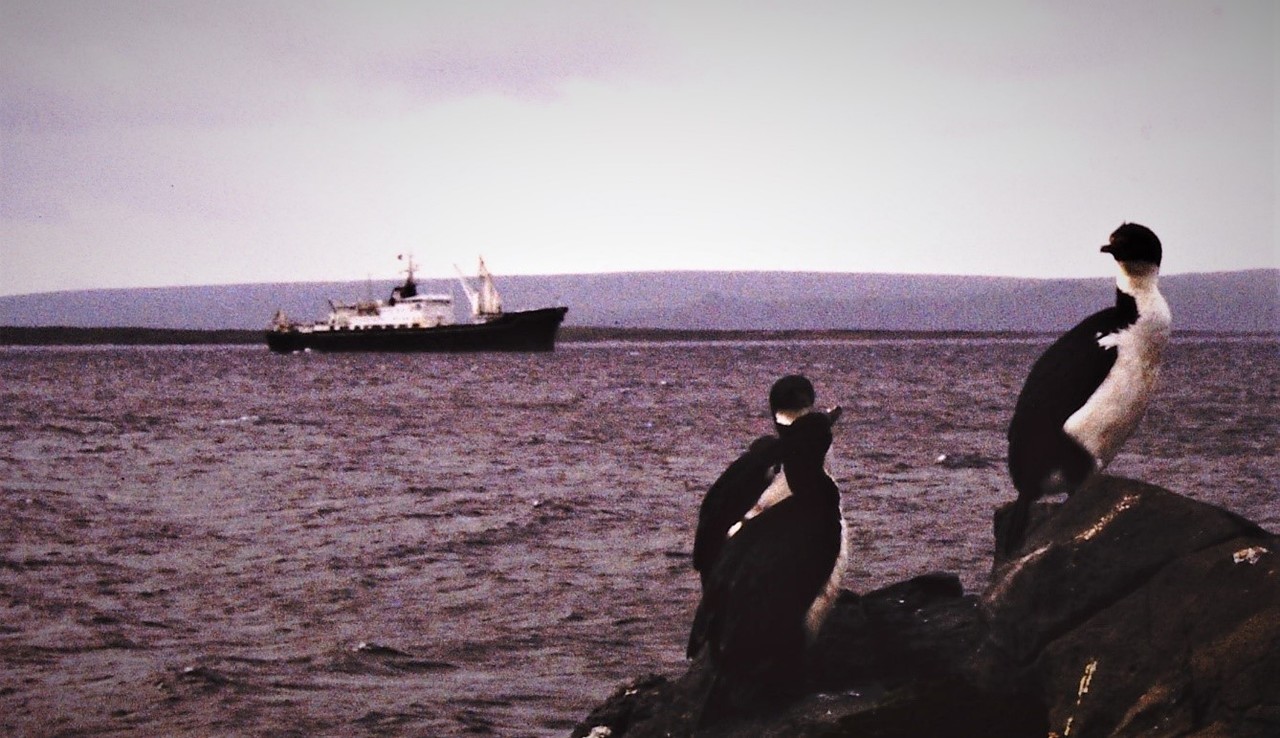
In June 1980, my thesis advisor (and co-author), Prof. Hubert J. Ceccaldi, proposed me to work on Antarctic krill for my Ph. D. thesis, and of course I took that opportunity. The First International Biomass Experiment (FIBEX) was starting. The cruise FIBEX MD 25 departed from the French Island of La Reunion on the Indian Ocean (on February 1981); it took 15 days to reach the sampling area (between 61°-64° S and 30°- 50° E), on board the French R.V. Marion Dufresne, with stops on the French Islands of Kerguelen and the Crozet Archipelago.
First stop on Kerguelen. The Marion Dufresne with cormorants as a reception committee
That was my first oceanographic cruise. I was, also, the first Mexican researcher to work on Antarctic krill.
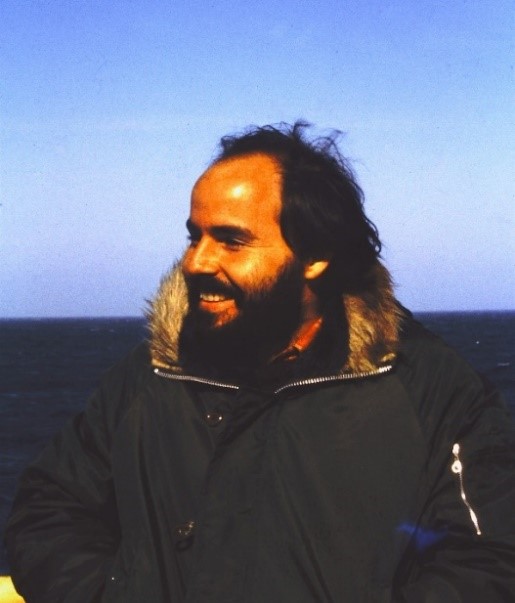
During the cruise MD25 FIBEX, on board the R.V. Marion Dufresne, February 1981

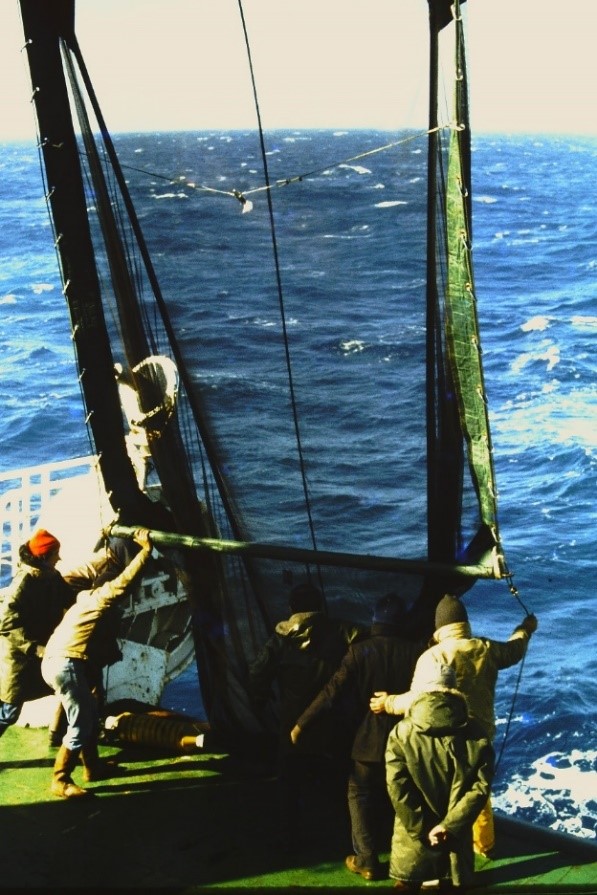
Penguin rookery in Crozet Island (left), estimated at about one quarter million individuals at that time, our second stop during the journey. The Rectangular Midwater Trawl (RMT) net (right) used during the cruise, with its 12 square-meter opening.
My thesis addressed the biochemical composition and calorimetry of Euphausia superba and Thysanoessa macrura. I moved to the Station Zoologique de Villefranche-Sur-Mer (Now Institut de la Mer, Université la Sorbonne), to work with Prof. Patrick Mayzaud. First of all, I needed to estimate a length-weight relationship, so I measured the length and weight of a sample of animals to predict their wet weight. After some samples were measured and analysed, I noticed differences in morphology between sexes and decided to examine the morphology of the species, performing different length measurements on the same animals. Other authors had shown that when E. superba reached sexual maturity, they developed sexual dimorphism; however, this was a novel finding at that time, not yet published 1, 2, 3. When I started working with total lipids, Prof. Ceccaldi (a carotenoids expert) proposed me to obtain total carotenoids data using lipid extractions. The technique was tested and validated in the laboratory.
At that time, a vivid discussion was ongoing on the longevity of E. superba 4, 5; thus, I first used my data to show that E. superba undergoes a major morphological differentiation, and proposed a Differentiation Index6. I also attempted to demonstrate that E. superba lived up to four years, while T. macrura lived two years7, using multivariate analyses and based on morphometry and carotenoid and lipids contents. We now know that krill live far longer than that. I submitted my thesis in January 1986.
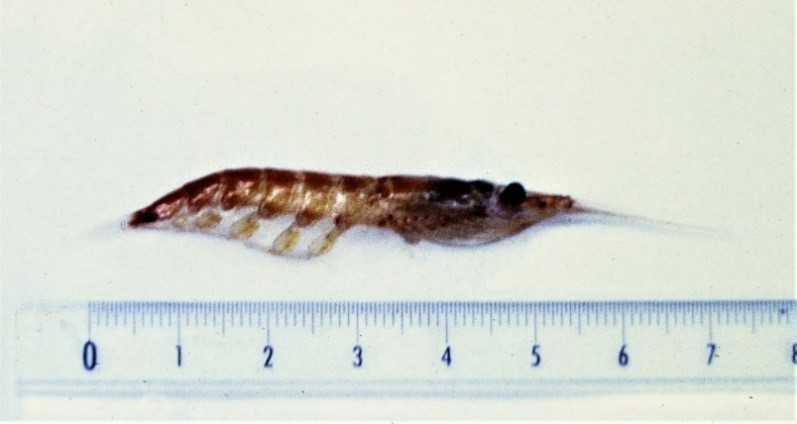
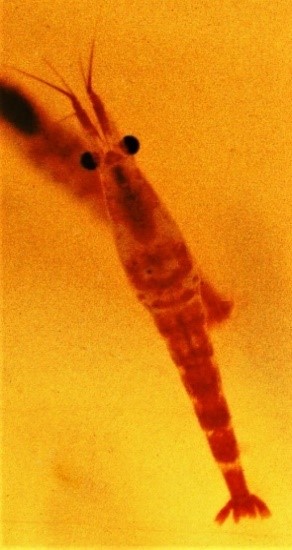
A mature Euphausia superba male (left) and a mature female (right). Notice the big eyes of Males II and the swollen carapace of the mature female.
Back in México, I published the remarkable data on morphological differentiation for both species, as well as the length-weight regression and its derived coefficient of condition differences, both between sexes and between sampling sites8.
I almost forgot about my Antarctic data. Later, I re-started publishing additional findings9, 10, 11 on other aspects of my thesis. After reading a paper by Auerswald et al.12 on carotenoids in E. superba, I regained interest on my results and wrote the paper summarized here. Here we report the presence of a morphologically distinct group of males, which we named Males II, showing a shorter carapace, different body proportions — especially a bigger abdomen —, and bigger eyes, relative to females or other development stages. This coincides with lower lipid and higher carotenoid contents, is a counterintuitive finding, since carotenoids are lipid-soluble. The hypothesis is that Males II are faster swimmers, derived from their unique physiology and as reflected on their biochemical composition. Males II will probably die after fecundation. This represents a novel finding, i.e., that morphometry — especially body proportions — influences physiology in a pelagic species, which is reflected in biochemical composition, considering differences between sexes and developing stages, it is an entirely new approach. This paper shows, for the first time, a relationship between morphology, lipids, carotenoids, and the activity of animals in E. superba; however, this relationship is yet to be fully explained.
You can read the paper in full here.
References
1.- Siegel, V. Relationships of various length measurements of Euphausia superba, Dana. Meeresfrosch. 29, 114-117 (1982a)
2.- Miller, D. G. M. Variation in body length measurement of Euphausia superba Dana. Pol. Biol. 2, 17-20 (1983).
3.- Endo, Y. Allometric differences observed on the same sized mature males of the Antarctic krill (Euphausia superba Dana). Bull. Plank. Soc. Jap. 36, 5–10 (1989).
4.- Ettershank, G. A new approach to the assessment of longevity in in the Antarctic krill Euphausia superba. J. Crust. Biol. 4, (Spec. 1). 295-305 (1984).
5.- Ikeda, T., & Dixon, P. Body shrinkage as a possible overwintering mechanism of the Antarctic krill, Euphausia superba Dana. J. Exp. Mar. Biol. Ecol. 62, 143–151 (1982).
6.- Färber-Lorda, J. Somatic length relationships and ontogenetic morphometric differentiation of Euphausia superba and Thysanoessa macrura of the southwest Indian Ocean during summer (February 1981). Deep-Sea Res. 37, 1135-1143 (1990).
7.- Färber-Lorda, J. Multivariate approach to the morphological and biochemical differentiation of Antarctic krill (Euphausia superba and Thysanoessa macrura). Deep-Sea Res. 38,771-779 (1991).
8.- Färber-Lorda, J. Length Vs, weight relationships and coefficient of condition of Euphausia superba and Thysanoessa macrura of the SW Indian Ocean during summer. Mar. Biol. 118, 645-650 (1994).
9.- Färber-Lorda, J., Beier, E., & Mayzaud, P. Spatial approach to the morphological and biochemical differentiation of Antarctic krill. J. Mar. Syst. 78, 518-524 (2009).
10.- Färber-Lorda, J., Gaudy, R., & Mayzaud, P. Elemental composition, biochemical composition and calorific value of Antarctic krill. J. Mar. Syst. 78, 525-535 (2009).
11.- Färber Lorda, J., & Mayzaud P. Morphology and total lipids in Thysanoessa macura from the southern part of the Indian Ocean during summer. Spatial and sex differences. Deep-Sea Res. II. 57, 565-571 (2010)
12.- Auerswald, L., Freier, U., Lopata. A. & Meyer, B. Physiological and morphological colour change in Antarctic krill, Euphausia superba: a field study in Lazarev Sea. The J. Exp. Biol. 211, 3850-3858 (2008).
Follow the Topic
-
Scientific Reports

An open access journal publishing original research from across all areas of the natural sciences, psychology, medicine and engineering.
Related Collections
With Collections, you can get published faster and increase your visibility.
Obesity
Publishing Model: Hybrid
Deadline: Apr 24, 2026
Reproductive Health
Publishing Model: Hybrid
Deadline: Mar 30, 2026
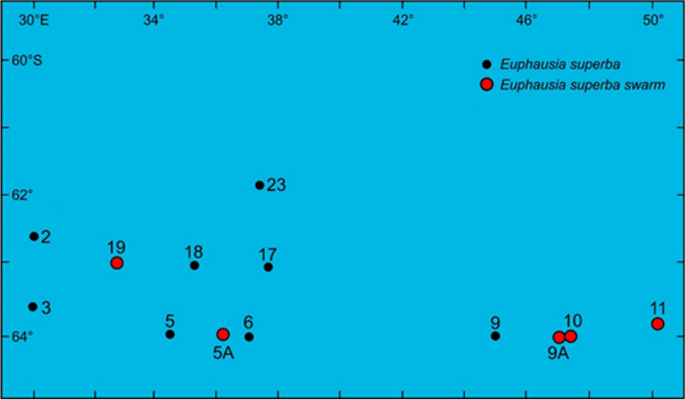



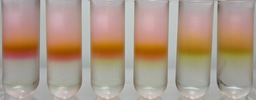
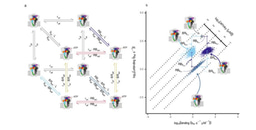
Please sign in or register for FREE
If you are a registered user on Research Communities by Springer Nature, please sign in